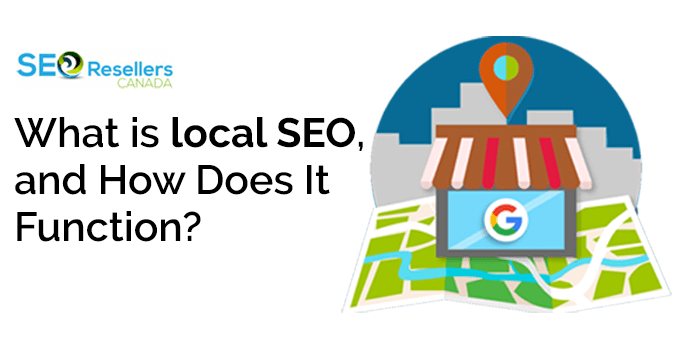In today’s world, inarguably, the marketing campaigns and strategies employed by businesses across the globe are digital. Businesses and their consumers are always super active online.
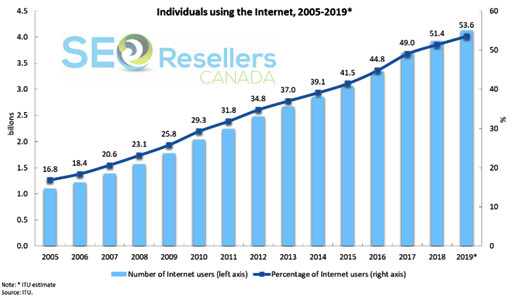
The digital platform, with its global reach and instant connection, provides businesses the perfect opportunity to reach their consumers and keep a keen eye on their behavior in real-time.
Digital Marketing Institute interviewed over 200 global marketing leaders to figure out what they thought the future of digital marketing looked like. Interestingly enough, digital strategy and planning ranked among one of the four top skills that they deemed as extremely vital. That just goes to show the increasing importance of digital marketing strategies and campaigns.
With that said, for a growing business, the perpetually changing digital landscape can be a bit overwhelming to manage. With a wide number of tasks and responsibilities that are required to run a digital marketing campaign, how can you create a seamless campaign and continue to fine-tune it along the way?
The first thing that will help you in creating a digital marketing campaign is to understand what a digital marketing campaign is!
1- What Is a Digital Marketing Campaign?
To understand what a digital marketing campaign is, you need to understand what a digital marketing strategy is. It’s a strategy that enables your business to achieve specific targets and goals via carefully selected digital marketing media and channels such as paid advertising, social media, and SEO. A digital marketing campaign makes up the building blocks and actions of a digital marketing strategy that help you move toward your end goal.
2- Difference between a Digital Marketing Strategy and a Digital Marketing Campaign
Oftentimes, these two terms are used interchangeably; however, they are not the same! A digital marketing strategy is your plan of action and the outline you have created for yourself, while the digital marketing campaign is when you take that plan and implement it in terms of actions. Simply put, the strategy is the “talk” and the campaign is the “walk”.
For instance, if the primary objective of your digital marketing strategy is to produce more leads via social media, then to meet that end goal, you might decide to run a digital marketing campaign on Instagram. A part of your campaign might be to share your most-loved products or services in your Instagram stories or featured posts to generate more traffic and leads to your business website.
Now, let’s take a look at the steps you need to take to create a solid digital marketing campaign strategy:
3- How to Set Up a Digital Marketing Campaign Strategy
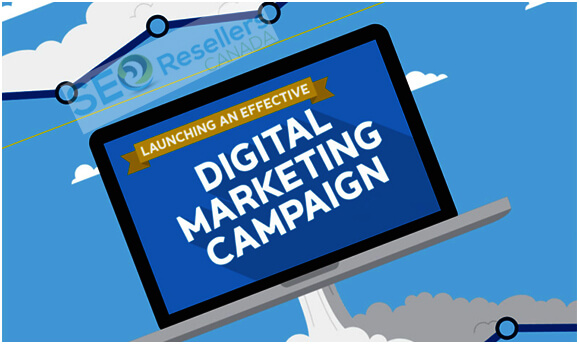
Source: https://twitter.com/seo_resellers01
Here’s how to set up a digital marketing campaign the right way:
3.1- Create Your Buyer Personas
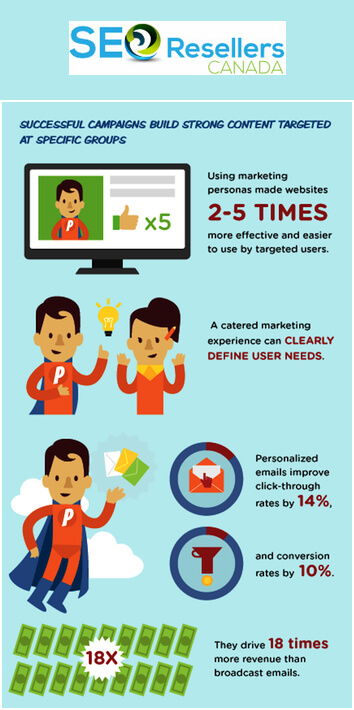
For any marketing plan to work, you need to have a clear idea of who your target audience is, i.e., who are the people you are going to market to. The most effective digital marketing strategies are founded on strong, meticulous buyer personas. So, naturally, your first step is to build a buyer persona.
A buyer persona represents your ideal consumers and you can create it by studying, surveying, and engaging with your business’s target audience. Just remember to base your buyer persona on real, quantifiable data and not on presumptions about your target audience as that will only move your strategy in the wrong direction.
Here’s the importance of buyer persona and personalization:
Source: HubSpot
To ensure that you have a well-rounded persona, research a wide range of prospects and customers, and even branch out of your database to reach people who share the same interest as your target audience. However, what kind of information are you looking for to create your buyer persona to shape your digital marketing strategy and campaign? The answer depends on the kind of business you have. It will vary depending on whether you are a B2B or B2C business or whether you sell a high-cost or low-cost product.
Here are some clear starting points for data collection that you can fine-tune and customize to suit your business:
3.1.1- Measurable and Demographic Data
- Location –use various web analytic tools to figure out which location your website traffic is generating from.
- Age – identify the trends in your existing customer base and prospects to figure out the right demographic.
- Income – the best way to gather sensitive information such as personal income is via in-person persona research interviews as people might be reluctant to share such details through online channels.
3.1.2- Qualitative Data
- Goals – you might already have some idea of the end goal of your buyer persona as it will be linked to the challenge that your product or service promises to solve. However, don’t make your persona on your assumptions and talk to real customers and your customer service reps to find out their exact goals.
- Challenges – to find out the common challenges that your audience faces, talk to your customers and sales and customer service reps.
- Hobbies/ Interests – ask your consumers about their hobbies and interests. How is this helpful? Well, it depends entirely on your industry. For instance, if you are a fashion brand, then it will help you to know if a large part of your consumer base is interested in fitness as it will help you come up with new products and collaboration ideas.
- Priorities – engage with your consumers to figure out what truly matters to them in terms of their relationship to your business. For instance, if you’re a B2B software company, knowing that your customers prioritize effective and timely customer support over a competitive price range is integral information.
By using all of the aforementioned details, you will create a holistic buyer persona, which will be incredibly effective and valuable for your business.
3.2- Recognize Your Goals
Your marketing goals should always be linked and in line with the essential goals of your business. For instance, if your fundamental goal is to boost your online revenue by 30%, your digital marketing goal might be to generate 60% more leads via your business website than the previous year. Whatever your overarching yearly digital marketing goal is, make sure to use the right marketing tools to monitor and measure it.
3.3- Assess Your Current Digital Channels
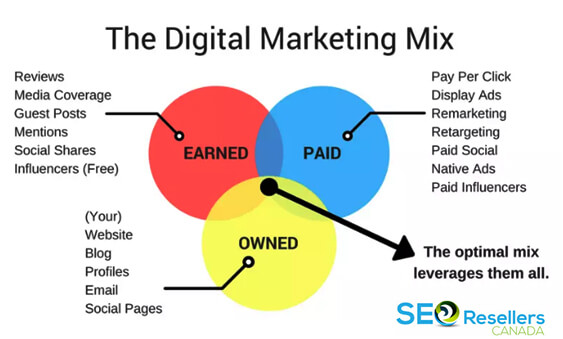
When you review your existing digital marketing channels to figure out which channel to use for your strategy, it always helps to look at the big picture first. This will enable you to stay focused. Gather everything you already have and categorize each channel in a spreadsheet. This will give a clear picture of your existing owned, earned, and paid media.
Let’s look at what each of these digital marketing channels entails:
3.3.1- Owned Media
Owned media refers to the digital assets or channels that your company or brand owns. This includes your business website, blog, social media accounts, and all the digital content that’s produced under your banner. Owned channels are digital marketing channels that your business has complete ownership of and control over.
3.3.2- Earned Media
Earned media is all about the exposure you attain or earn via word-of-mouth marketing. This includes all the guest posts that you have done on other websites, your PR work, or the customer experience you have delivered. Think of earned media as the recognition and reward that you receive for all of these efforts. It usually involves getting press mentions or positive reviews. It also includes your audience sharing your content via their social media accounts or other digital channels.
3.3.3- Paid Media
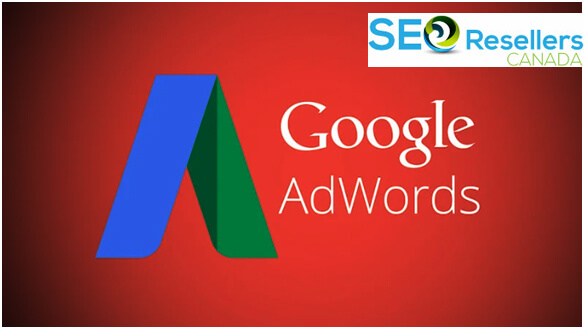
As the name suggests, paid media refers to digital channels that you spend money on to attract your buyer personas’ attention. This type of media includes Google AdWords, native advertising, paid social media posts, or any other medium through which you boost your visibility by paying for it.
For instance, imagine that you have an owned piece of content on a landing page on your business website that you have created for the sole purpose of generating leads. Now, you have the idea that working with different parts of the digital framework will work better than just putting all of your eggs in one basket.
To boost the number of leads your content generates, you work toward making it as sharable as possible. You aim to entice your target audience into sharing your content on their social media profiles, hence promoting it. This will drive more traffic to your site. This makes up the earned media element.
To enable your content to reach the right audience so that it can get shared, you might post about it on your social media accounts such as Facebook and Instagram as a sponsored ad. This way, you are paying for it to be seen by more potential leads.
This is how seamlessly the three integral parts of a digital marketing strategy work. With that said, you don’t always need to use all three elements together. For instance, if you already enjoy a steady stream of traffic and leads on your website and your content is getting shared successfully, then you might not need to invest in paid marketing. So, make sure to find the solution that works best for your business and marketing goals.
3.4- Review and Design Your Owned Media Campaigns
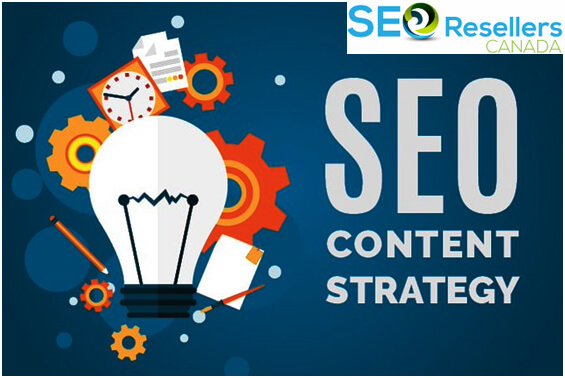
Source:https://twitter.com/seo_resellers01/status/1217800270995812354
Owned media is at the heart of digital marketing, and more often than not, it takes the shape of content. This is because almost every message that you have to convey to your audience can be classified as content. This includes every product description, landing page, blog post, infographic, video, and podcast on your website. Even your About Us page is considered as content and so are all of your social media posts.
Content is what helps you convert website visitors into leads and customers. It also enables you to boost your brand’s online presence and visibility. When this content is search engine optimized (SEO), it has the potential to boost your organic traffic. If you want SEO services, then look no further than the best SEO company SEO Resellers Canada!
This is why regardless of what your digital marketing strategy is, you need to incorporate some form of owned content in it. To get this right, you need to first decide what type of content will help you reach your ultimate goal. For instance, if you aim to generate 40% more leads via your website than last year, then you need to focus on a webpage that has been your go-to lead-generation machine in the past and optimize it.
Here’s the process that you need to follow to find out the perfect owned content for your digital marketing strategy:
3.4.1- Audit All of Your Present Content
Make a comprehensive list of all of your existing owned content and rank each piece of content according to the one that performed the best in the past in relation to your current goals. For instance, for lead generation, find the content type that generated the most leads over the last year. It could be anything such as blog posts, a podcast, or even an eBook. This will help you figure out exactly what’s working for you and what’s not and enable you to set yourself for success for future content planning.
3.4.2- Identify the Gaps in Your Present Content
Take a look at your buyer personas and identify any gaps that you might have in your content. For instance, imagine that you are a tutoring company and you know via comprehensive research that a major pain point for your personas is finding effective methods to study. Now, when you made an inventory of your content, you probably realized that you didn’t have content that met this emergent need. This is where you need to create some high-quality content to fulfill the needs of your target audience.
By reviewing your existing content, you might also figure out a lot of other things such as the fact that the eBooks that you hosted on a particular landing page converted exceptionally well. In the example of the tutoring company, you could combine the two findings and create an eBook on “Effective Ways to Study”.
3.4.3- Make a Content Creation Proposal

Source:https://twitter.com/seo_resellers01/status/1219973988425838593
Based on your overall findings, make a comprehensive content creation plan that outlines the type of content that you need to achieve your digital marketing goal.
Your outline should include:
- The title of your content
- The type of format you will use
- Your end goal
- The promotional channels you will use
- Your purpose in creating this type of content
- The priority level of your content
Along with the aforementioned things, your outline should also include your budgeting scale in case you want to outsource the content creation. In case you are creating it yourself, make sure to include an estimated time for its completion.
3.5- Review and Design Your Earned Media Campaigns
The next step in creating an online marketing campaign is to evaluate your previous earned media and see if it aligns with your current marketing goals. Sticking with the example of lead generation, figure out where your traffic and leads came from and rank each earned media campaign from most effective to least effective. You might find that Facebook is the social media platform where people shared your content the most last year, which generated lots of website traffic for you. The idea is to figure out which earned media category will help you reach your ultimate goal effectively. With that said, if you want to go down a new road in earned media campaigns, then don’t shy away from it just because you haven’t done it before.
3.6- Review and Design Your Paid Media Campaigns
Evaluate all of your existing paid media across every platform such as Google AdWords, Twitter, Facebook, Instagram, etc. this will help you figure out what sort of campaign will help you achieve your current goals. For instance, if you haven’t seen the expected results from your AdWords campaign, perhaps it’s time to reevaluate your campaign or try a different avenue, which will yield better results. Outline what has worked for you in the past and what hasn’t and go from there. By the end, you’ll hopefully have a clear idea of which paid media platform you should use for your current campaign.
3.7- Look at the Whole Picture
Now that you have done the essential planning and research, you should have a clear vision of the different elements that will make up your digital marketing campaign strategy.
To review, here are the elements you should have so far:
- A well-rounded profile of your buyer persona
- At least one concrete digital marketing goal
- Clear inventories and audits of your existing owned, earned, and paid media
- An owned content creation outline
Now, it’s time to bring all of these separate elements together to form one cohesive digital marketing campaign strategy. Make sure to map out the exact steps and actions that you will take to meet your overarching goals. The best way to do this is to create a comprehensive spreadsheet with separate columns for your owned, earned, and paid media frameworks.
Additionally, make sure to plan a campaign that can last at least 6 months to a year. A solid timeline will allow you to map out when you will execute each element of your campaign and help you stay on schedule. It will also make it easier to see and evaluate your progress throughout the campaign.
Now that you know of all the elements that you’d need to set up a digital marketing campaign, let’s see how you can run one.
4- Things You Need to Remember When Running a Digital Marketing Campaign
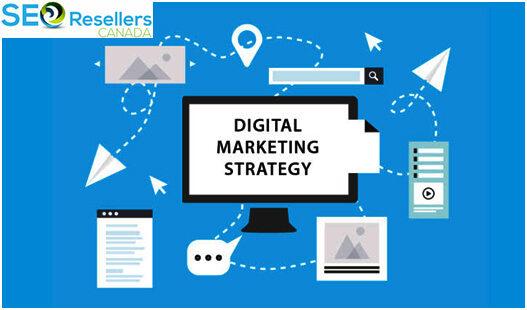
Source:https://twitter.com/seo_resellers01/status/1211638633712611330/photo/1
Wondering how to run a digital marketing campaign? Remember the following essential elements:
4.1- Figure Out the Most Effective Digital Marketing Strategy

According to Smart Insights, the most effective digital marketing strategy in 2018 was social media marketing, followed closely by content marketing, marketing technology, and SEO.
However, it isn’t necessary that this exact order will work for your business. So, you need to figure out which strategy will work the best for you. What matters the most is to have a holistic approach that matches and falls in sync with your brand and message.
4.2- Stay Flexible
The thing that you need to know about running a digital marketing campaign is that it’s a bit of a trial and error process and there’s no one way to go about it. So, while you will need a solid strategy in place, be ready to show your flexibility when it comes to the following elements:
- Upcoming digital marketing trends
- Shifting SEO requirements and patterns
- Your content creation timeline
- Your chosen social media channels
- The KPIs you want to focus on
- Progress reports
So, if you are wondering how to do a digital marketing campaign, then the best way forward is to monitor your progress every step of the way and make appropriate tweaks as you go. If you want help with your digital marketing campaign, then reach out to SEO Resellers Canada for the best digital marketing solutions perfectly tailored for your business.
4.2.1- Understand the Needs of Your Consumer
We have already discussed the importance of creating a comprehensive buyer persona. However, your job doesn’t just end there. You have to constantly keep evolving that persona to meet the needs of your customers. It involves staying culturally aware, speaking the language of your consumer, predicting their buying patterns, creating unique partnerships with current influencers for your key demographics, and so much more. This is an ever-evolving process that will require you to keep a keen eye on your customers and target audience via instant contact through social media.
4.3- Use Content for Lead Generation and Establishing Your Authority
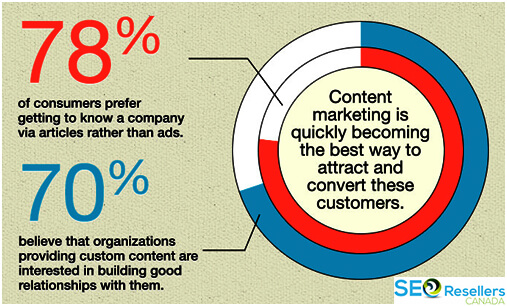
Did you know that a whopping 77% of internet users read blogs regularly? Given this huge percentage, it should come as no surprise that content marketing is a highly effective way to generate leads. In fact, for every dollar spent, content marketing generates at least 3 times as many leads as paid search advertising. So, make sure that you continue to provide valuable and in-demand content to your audience.
With that said, when you promote your content on social media or through other channels, make sure that you share your company’s values and mission statement with it. For instance, use the stories that you have embedded within your company to form an emotional connection with your consumers. They will help you present an authentic and approachable image to your audience, which will build their trust in you.
4.4- Go Live and Use Podcasts
Make sure to use podcasts on controversial or tricky topics in your industry to engage with your target audience. Use live videos to show your social media followers the behind-the-scenes looks of your business and engage with them via interactive activities such as Question and Answer sessions.
4.5- Focus on Mobile
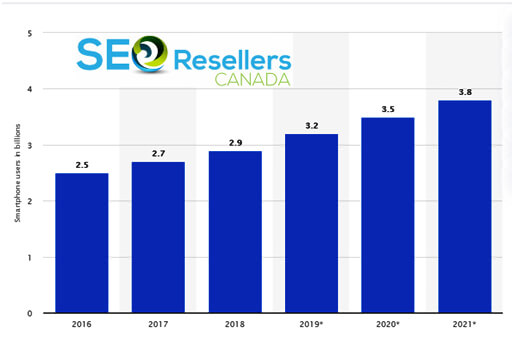
According to Statistica, the current number of smartphone users has surpassed 3 billion and will continue to grow over the next few years.
Many people use their smartphones to read blogs and reviews and shop online. With the current COVID-19 pandemic, people are even more inclined to use their phones to use social media, visit e-commerce websites, and more. So, the need of the hour is to have a fantastic mobile marketing strategy in place for your digital marketing campaign.
Here’s what you need to remember:
- Optimize your website to make it mobile-friendly
- Use accessible CTAs
- Connect your contact details to a helpful map
- Review ads for social media and other mobile-friendly platforms
4.6- Review and Refine
When you are running your digital marketing campaign, keep a keen eye on your key performance indicators (KPIs). Have a proper plan in place to review and monitor your goals.
Remember the following:
- Avoid all vanity metrics, which means that you need to ignore the numbers that aren’t crucial to your goal or long-term success
- Be flexible about your KPIs
- Make sure to isolate the different elements of your campaign to eliminate or replace the ones that aren’t working seamlessly with the other elements
Now, let’s take a look at some successful digital marketing campaigns in recent times and what you can learn from them.
5- Successful Digital Marketing Campaigns
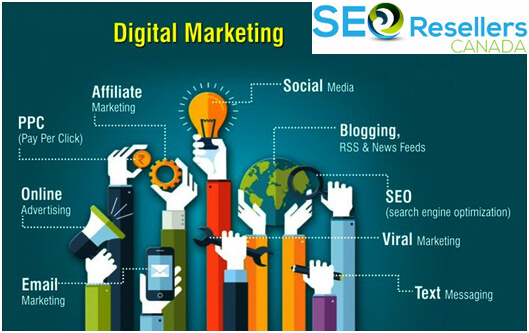
Source: https://twitter.com/seo_resellers01/status/1229396157492674561
Here are 4 successful digital marketing campaigns that will help you learn how to launch a digital marketing campaign:
5.1- Heineken
Heineken chose quite a unique approach to storytelling; it used in-demand and trending topics that often incite opposing points of view to bring people with different views together. It approached individuals to comment on common topics in the news such as feminism, transgenderism, and global warming. After completing the tasks, the individuals were shown the interviews of their partners. After the interview, the pairs were given the option of discussing their views over a beer or leaving as is. The unique concept and the video garnered a lot of views and positive visibility and publicity for the company.
This goes to show how emotional and heartwarming storytelling can create viral content, which will lead to brand attention and visibility. You don’t always have to overtly promote your brand. At times, an indirect way leads to more engagement and helps you get your message across to more people.
5.2- ASOS
ASOS dabbled in creating user-generated content (UGC) by creating the #AsSeenOnMe campaign on Instagram. It encouraged their customers to post images of themselves wearing ASOS outfits. It was an excellent way to promote their products. The wonderful thing about UGC is that it is free of cost, self-perpetuating, and is the ultimate marketing campaign. The company used the hashtag to share their customers’ posts on its own feed and even added product descriptions to them. Moreover, it also provided people with a #AsSeenOnMe section on its website, which they could click on to find and purchase the products worn by the people in the campaign.
User-generated content is an incredible way to promote your brand and generate leads and sales. Make sure to use a branded hashtag to easily track such campaigns. You can also use influencer marketing to promote your campaign and gain more traction.
5.3- Wholesome Culture
Wholesome culture focused on its customers’ interests and needs. As a fashion brand that specializes in cruelty-free clothing, it makes sure to share environmentally friendly messages in its content via various pop culture references and memes. The company also narrowed in on a specific interest of its consumers – vegan diets. It found the perfect way to cater to this interest by posting vegan recipe videos on Instagram. Even though it has nothing to do with fashion, the video content helps the company stay true to its philosophy and provide its customers what they want. It helps boost brand engagement and loyalty. Wholesome Culture makes sure to use the appropriate hashtags such as #veganlife to ensure that the right audience can access its posts. It also has a blog full of vegan tips and so much more.
Like Wholesome Culture, you can also use your target audience’s interests as part of your digital marketing campaign. It will help you build a strong sense of community with them and increase your brand awareness.
6- The Bottom Line
So, how would you run a digital marketing campaign? The answer depends entirely on what works for you as a brand and business and what you hope to achieve with your campaign. So, make sure to stay true to your purpose throughout your campaign and generate comprehensive buyer personas to meet the needs of your consumers. Use different digital media channels together to achieve your goals and churn high-quality and in-demand content throughout your campaign. Always stay in touch with the fluctuating trends, keep your content optimized, and keep a keen eye on how your campaign is going so that you can tweak it accordingly. All in all, remember to cater to the consumer’s wants and needs to achieve success in your campaign. This is the only way to make digital marketing work for your brand!



















